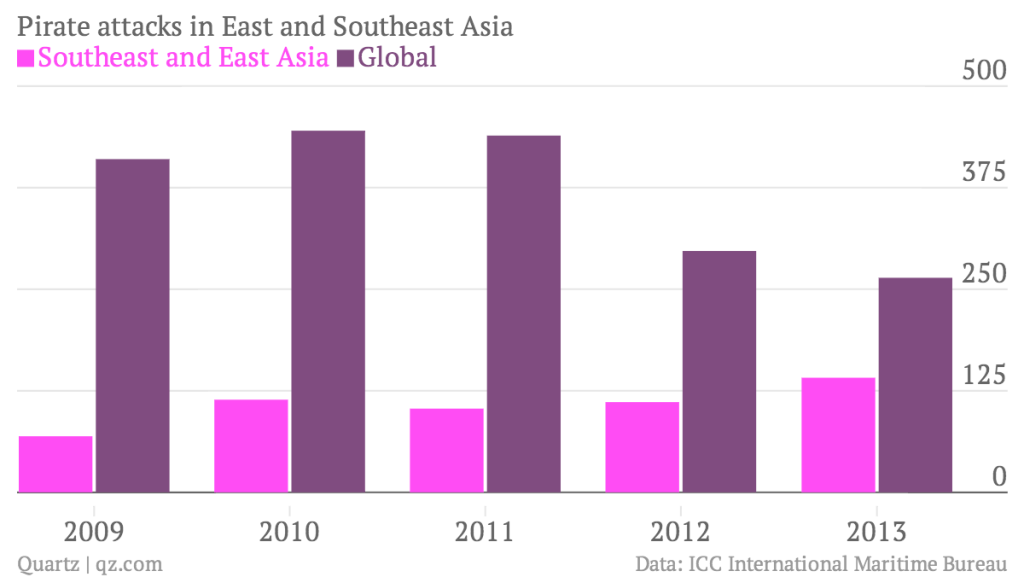The kidnapping is the latest sign that although piracy on the high seas is down globally, it is getting worse in some pockets of the world—including increasingly crucial shipping routes in East Asia like the Malacca Straits, where the attacked oil tanker was traveling. The straits accounts for the majority of goods and oil shipped to and from China, Japan, South Korea and Taiwan.
In 2013, there were 264 actual and attempted attacks on ships, down 11% from 2012 and 41% from 2011, when Somali pirates were at their most active. (A fall in Somali attacks accounts for much of the recent decline.) But over half of the incidents that did happen last year were in East Asia, mainly Southeast Asia, where such attacks have been steadily ticking upwards over the past few years.


Almost 75% of pirate attacks in 2013 occurred in waters surrounding these seven countries. IMB Piracy Reporting Centre
More worrying is that violent attacks like the one on the Singaporean tanker are becoming more common. Since the late 1980s, Southeast Asia has been one of the world’s piracy “hot spots,” but incidents have traditionally consisted of simple theft—night-time raids where pirates leave before confronting a ship’s crew.
Now, according to the Nautilus Institute, declining fish stocks in the region—the result of overfishing and pollution—may be causing more violent piracy and kidnapping for ransom. Impoverished and desperate fishers are turning to piracy as a way to make up for falling incomes. And competition over fish resources has prompted an increase in illegal fishing, which has made more fishing boats prime targets for pirate gangs. Fishers casting illegally in maritime zones outside of their own usually carry extra money on board to pay off authorities and are less likely to call on authorities.
This post originally appeared on Qz.com.










